Whew, 2023 was a wild ride, eh? Tech CEOs played musical chairs. Social media platforms were upended. Google core updates shook the SERPS like an algorithmic snow globe (we’re not bitter, though). What could possibly be the content marketing trends for 2024?
It may feel a bit chaotic. But when you step back a bit you see a single theme: the search for authenticity. Audiences are on the move, looking for answers and advice from people they trust. Meet them there, and you’ll be ahead of most other marketers.
There’s a lot to unpack here. From AI’s next content superpower to keeping up with the shifting use cases for social media, these seven content marketing trends will have you ready to tackle what 2024 has in store:
- Marketers will get intentional about using AI
- Personalization becomes AI’s new superpower
- You won’t need to label your AI content (but it better be good)
- Search shifts to social media platforms
- The demand for video content continues to expand
- 2024 will be the year of the employee ambassador
- We’ll see a return to some content marketing basics
2024 content marketing trends
Let’s take a closer look at the top content marketing trends to know for 2024 and explore ways you can prepare to take advantage of each one.
1. Marketers will get intentional about using AI
Most marketers say they’ve at least tried AI at work. For the last couple of years, though, many of us simply poked at our AI tools with a stick to see what they could do.
The caution was warranted. Early experiments to game search engines had some nasty outcomes. Like the “SEO heist” that briefly gained, but ultimately lost, hundreds of thousands of monthly views after Google put the smackdown on the AI-enabled scheme.
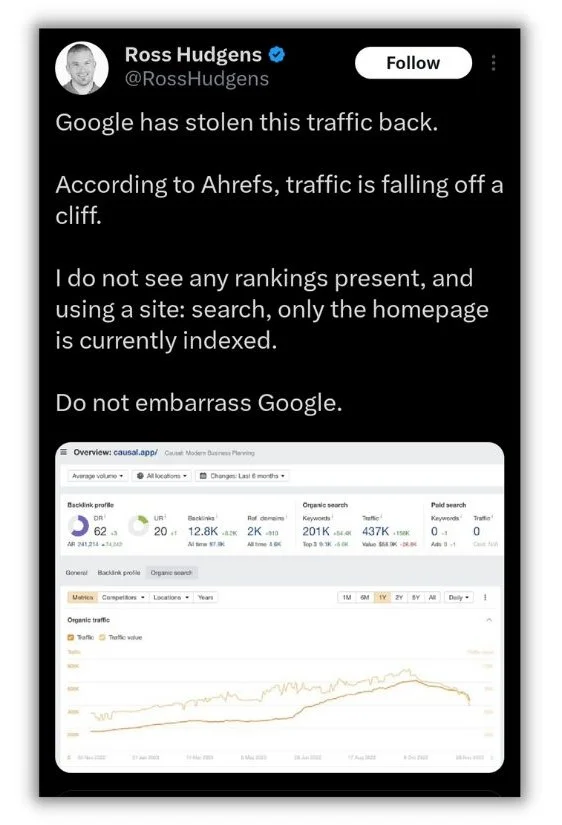
SERP-hacking shortcuts won’t cut it in 2024. Source
Google isn’t anti-AI content (which we’ll talk about in a bit). But search engines know readers are savvy enough to sniff out copy-and-paste posts.
There are lots of less seedy ways generative AI can help you create better content. In 2024, we’ll see content teams become deliberate about testing AI tools and applying them in creative ways.
For example, the team at Calendly held a week-long “AI Summit” to figure out what tools and use cases made sense for them.
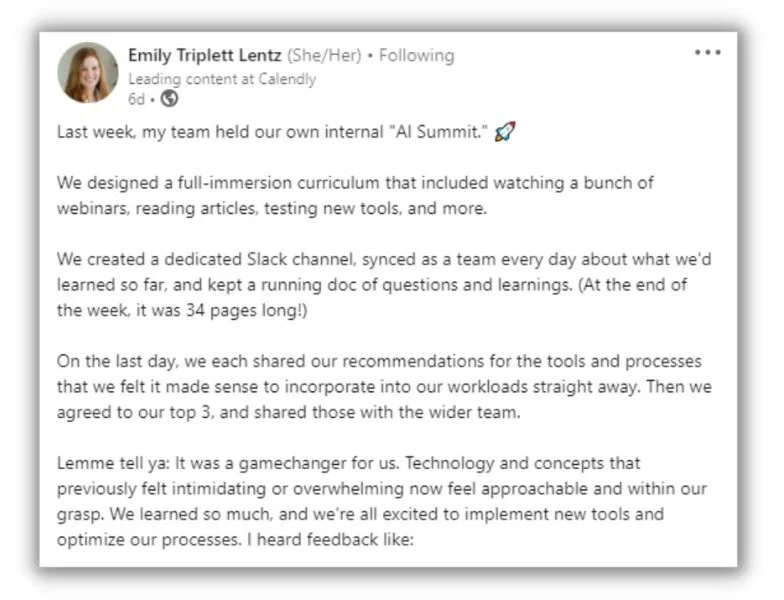
Deliberate, cooperative, team-wide experimentation will be how many of the best marketing teams incorporate AI in 2024. Source
Even if you can’t devote a whole week to figuring out AI, you can set aside an hour or two at regular intervals. Read about the tools, follow some experts, and record what you learn. Then apply it in ways to let your team move faster and create better content (like repurposing content). Marketers that do that this year will win with audiences and search engines.
How to prepare for this trend:
- Block a set time to review AI tools and how to use them.
- Pick three ways to use AI and incorporate them into your workflow.
- Schedule a date three months away to review your success.
- Repeat regularly to expand your AI adoption.
👋 Just getting started? This guide to AI in marketing is your shortcut to using the newest tools and tactics.
2. Personalization becomes AI’s new superpower
What if you could send a unique marketing email to each of your 10,000 newsletter subscribers every week filled with content curated based on their individual behavior? Think of the effect on your open and click-through rates!
It’s actually a reality right now. And it’s just one of the ways AI will make all content marketing channels ultra-personalized in 2024.
Personalization has been a cornerstone of marketing since long before Netscape deployed the first cookie to track website visitation. The challenge has always been gathering real-time information from a large group of individuals and using it to instantly alter each customer’s experience.
That’s right in AI’s wheelhouse.
In another application, you can send a blog post reader to a dynamic version of your homepage based on their past behavior. If someone just read three articles about staying fit after 50, their version of a landing page would offer similar content and products specifically curated for them.
YouTube does a version of this now. The more you engage with its platform, the more customized your homepage becomes.
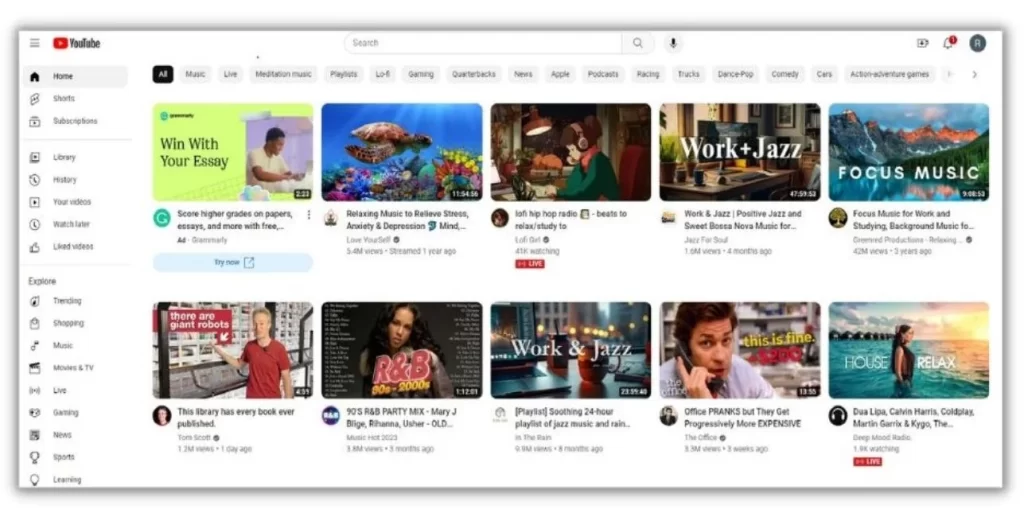
In 2024, you’ll be able to present website visitors with a customized version of your homepage, just like YouTube does.
As dynamic website tools become more affordable, we’ll see content and marketing teams use them to convert more blog readers into happy customers.
How to prepare for this trend:
- Get to know your customer segments and make sure you have relevant content for them.
- Review current lists of AI tools to find the ones that will help you personalize your marketing.
- Pick one channel (email, website, landing pages) to personalize with AI, track it, and expand.
3. You won’t need to label your AI content (but it better be good)
One concern that’s plagued AI content from the start is transparency. Meaning, if you create an asset using generative AI, do you have to label it as such?
The simple answer is: Not yet.
It might get a little confusing, especially after seeing the backlash when Sports Illustrated got busted for allegedly publishing AI-created content. But the real sin of those pieces wasn’t the content, it was the fake, AI-generated writer bios used to trick readers.
There are no current laws stating that AI-assisted content needs a label. And Google is on the “no need to label” bandwagon, too.
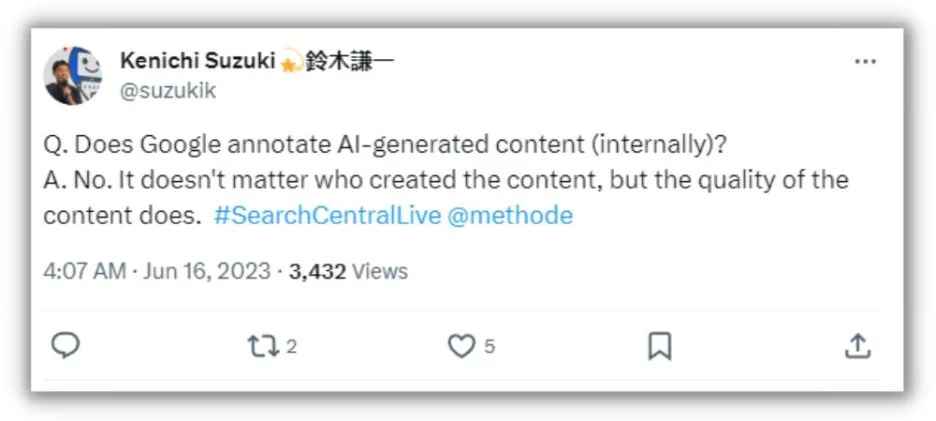
Search expert Kenichi Suzuki confirmed that Google cares about content quality, not who (or what) wrote it.
This could change. We’re about to run into our first presidential election cycle with widespread access to user-friendly AI tools. People are already a little nervous about the mass potential for deep fakes and misdirection that could lead to. The EU has urged big tech apps to label AI content. And a New York Times lawsuit against OpenAI and Microsoft will have a seismic ripple effect on all AI content.
So it’s possible we’ll see AI citation regulations down the line. But it won’t likely happen by the end of 2024.
No matter what the rules are, though, never pump out AI content without a human editor. Google says AI content is A-Okay, but it still cares about things like authority and experience (things that are hard to get from AI content alone).
You definitely don’t want to end up on the wrong end of Google taking your traffic away.
How to prepare for this trend:
- Consider if your specific audience would prefer you label content as AI-generated.
- Use AI as a tool to assist content creators, not replace them.
- Create a playbook or style guide that sets standards for all of your content, no matter where it comes from.
- Monitor the analytics of your human-only and AI-assisted content to see if either net better results.
4. Search shifts to social media platforms
People, especially younger ones, are migrating from SERPs to social media in search of more authentic, helpful answers to their questions. Expect that trend to continue in 2024, especially as social platforms add more search-focused features.
Exhibit A, 57% of Gen Z says they like TikTok more than Google as a search engine, citing the more relatable and personal answers they find on the video-sharing platform.

TikTok’s transforming into a search source for Gen Z.
Google’s data confirms the shift, saying around 40% of young people start their search on TikTok or Instagram.
The trend shows in the SERPs. Reddit—where people share content and discuss it—was the biggest winner from Google’s August core update.
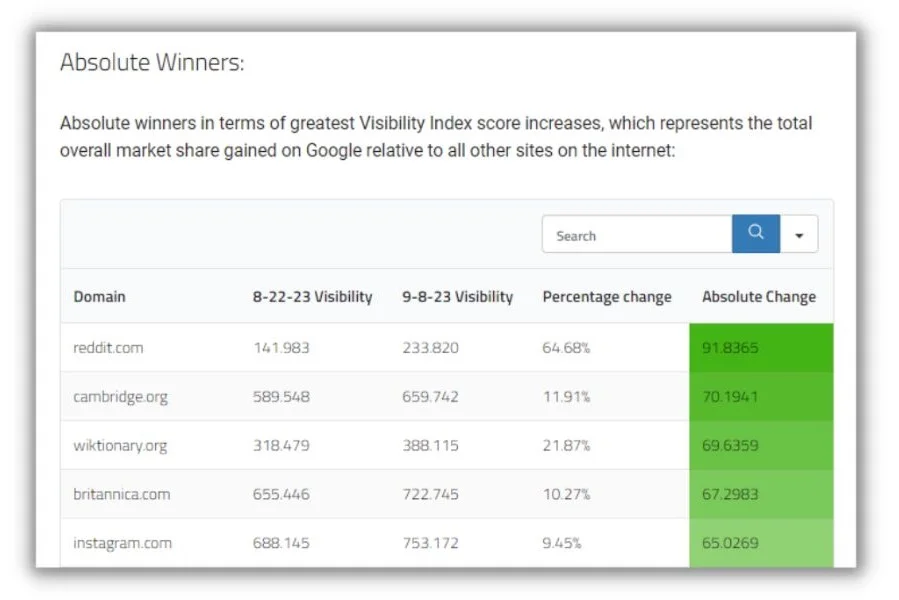
A review of the most affected websites after Google’s August core update showed Reddit in a sweet spot.
TikTok is taking the lead on this trend with a new Keyword Insights tool to help marketers research social media keywords. The platform is also positioning itself as a one-stop-search-shop, testing Wikipedia results and Google search links in its feed.
Other social media apps are in the search game, too. Instagram has a robust search function and shopping features.
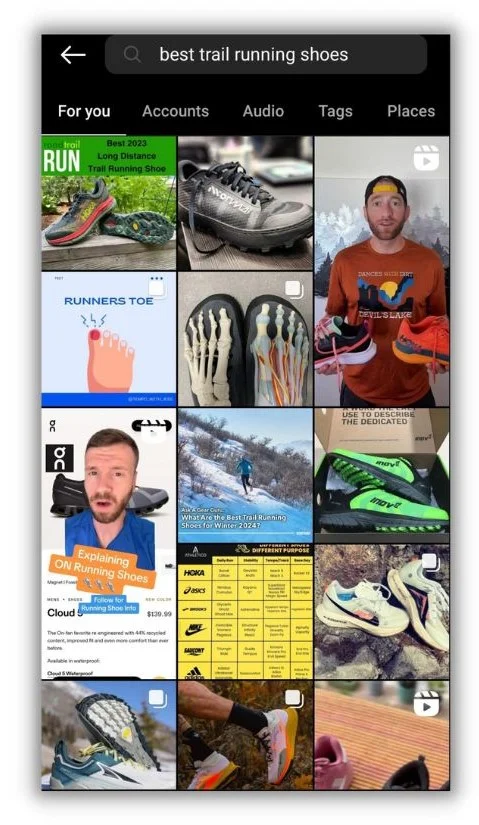
Instagram users find new products and brands through the search feature.
In 2024, you’ll need to create social content that’s optimized for discovery just like you would for search engines. Just make sure it’s authentic and trustworthy because that’s why people went to social media in the first place.
How to prepare for this trend:
- Get to know social media SEO.
- Gather your list of keywords.
- Create search-optimized social media content that answers important questions in an authentic, relatable way.
5. The demand for video content continues to expand
The 2024 content marketing trend for video is simply more. More features, more formats, and more videos on platforms that were traditionally text-first.
TikTok kicked off the short-form vertical video trend a while ago. Those quick clips are still an engagement superstar on most platforms (short-form videos are 52% more likely to get shared than any other type of content).
What’s shifting in 2024 is the thirst for video content beyond the 15-second clip. Gen Z viewers, for example, are heading to YouTube to watch hours-long fan videos that deep dive into shows they stream.

Gen Z is known for their love of bite-sized clips, but they’re increasingly consuming longer videos.
TikTok is even pushing its creators to produce longer videos. And it’s toying with the idea of another bump in max video length to 15 minutes (which would match the max length that Instagram pushes to Reels).
Expect new features to make longer videos more enjoyable. For example, TikTok added scrubbing thumbnails so viewers could scan videos for their favorite moments.
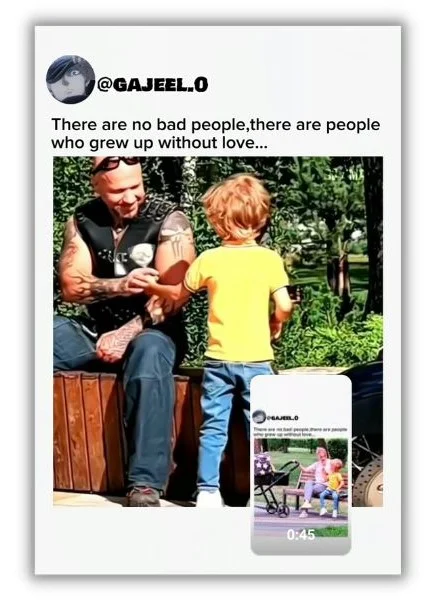
Social media platforms continue to add features to make longer videos more popular.
You’ll even start seeing more videos on LinkedIn, especially since a video is 20 times more likely to be shared than a text post. Don’t expect funny cat or cool vacation videos though. LinkedIn recently tweaked its algorithm to prioritize “knowledge and advice” over personal content.
Here’s an example from the team at Copy.ai. Notice how they use a short, educational video on LinkedIn as a hook for a longer one on YouTube.
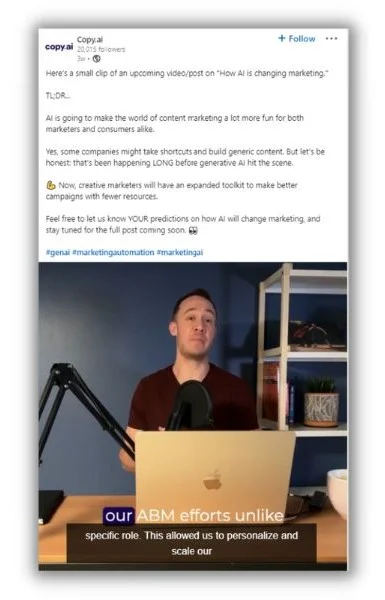
Short, educational videos on LinkedIn are exactly what the algorithm is looking to surface for its users. Source
Video’s only going to get more popular in 2024. If you aren’t using it yet, give it a try. Even if it’s just you explaining something interesting into your smartphone.
How to prepare for this trend:
- Try taking high-performing text content like blog posts and turning them into videos.
- Test and track videos of different lengths to find the sweet spot for your audience.
- Cut and cross-post content on multiple platforms, and track which nets the best engagement.
6. 2024 will be the year of the employee ambassador
The search for authenticity will encourage more people to step out from their brand’s shadow to connect with customers in a more personal way as part of their content marketing strategy.
You can certainly see this on LinkedIn. Content there usually gets more engagement when it’s published on a personal account rather than the brand’s. So expect more businesses to follow in the footsteps of Alaura Weaver at Writer, who regularly shares company updates, events, and success stories on LinkedIn.
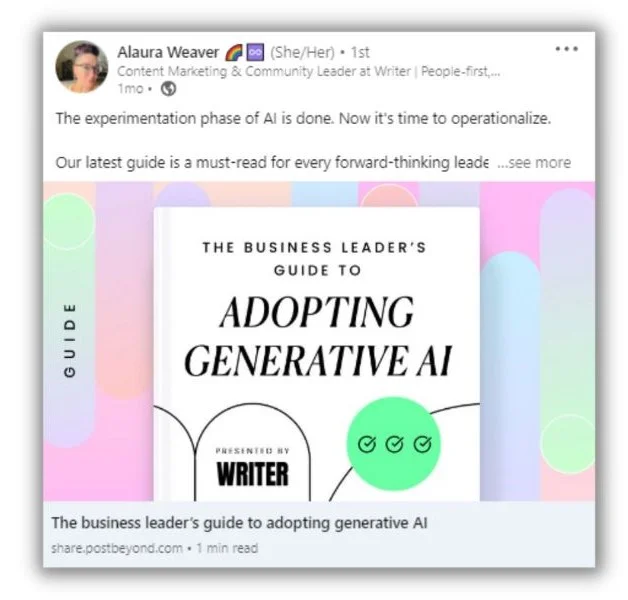
Your employees might be the secret content distribution strategy you need in 2024. Source
This will be true for all but a few brand unicorns that have developed their own personalities and grown a following (hi, Duolingo!).
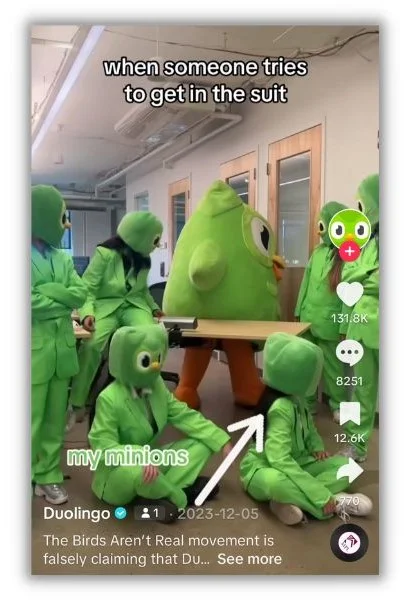
Most brands don’t have the cache to compete with other creators on social media, but their employees do. Source
Gen Z is a surprising motivator of the personal/professional social media mashup. Their distrust of brands and new-found love of LinkedIn will reward businesses that connect with them on a personal level.
Employee-influencer content will grow on other platforms, too. People already post themselves on the job at dental offices, car rental companies, and restaurants.
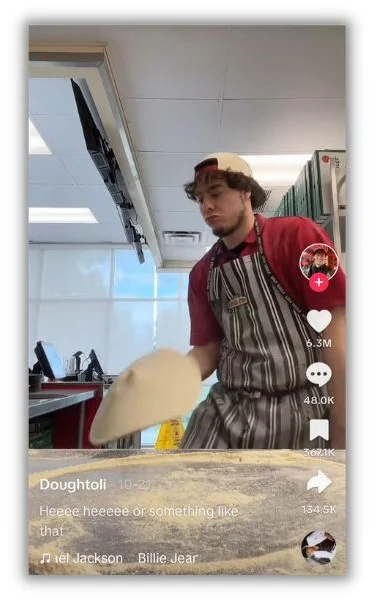
An employee ambassador post can net millions of views. Source
Smart companies will encourage their employees to post these personal-yet-promotional videos and reward them well when they do. One of these posts is a lot more effective than trying to connect with a faceless brand.
How to prepare for this trend:
- Set up a system to reward employees who promote your brand online.
- Make it easy for them to share your content through employee advocacy platforms.
- Create a social media guide to help people know what and how to post about your business.
7. We’ll see a return to some content marketing basics
Like bell bottoms and Barbie, a few foundational content marketing trends will be back with a vengeance in 2024.
Tumultuous SERPs and restless audiences have some content marketers re-evaluating what makes content useful, approachable, and engaging.
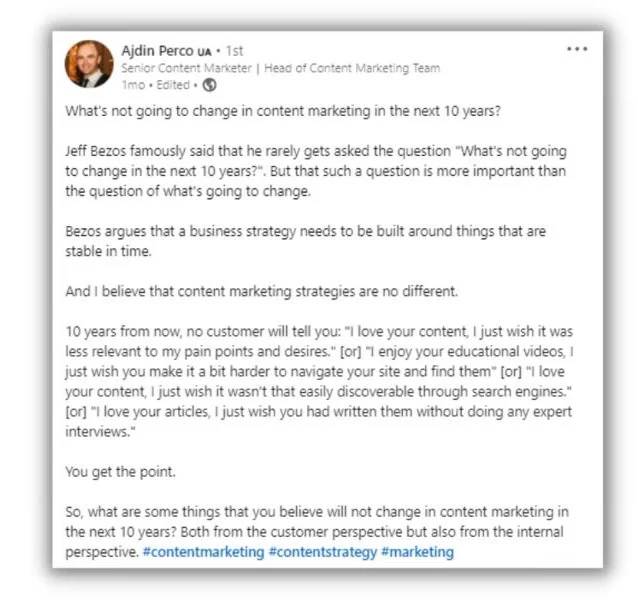
In 2024, marketers will evaluate their content strategies to make sure they meet the original standards of quality. Source
There are three “old school” content strategies that should be on your radar this year:
- Owned media
- Topic clusters
- Original research
Owned media
The loss of third-party data and Google’s SERP shakeups will lead more marketers to refocus on their email lists, resource centers, and brand communities.
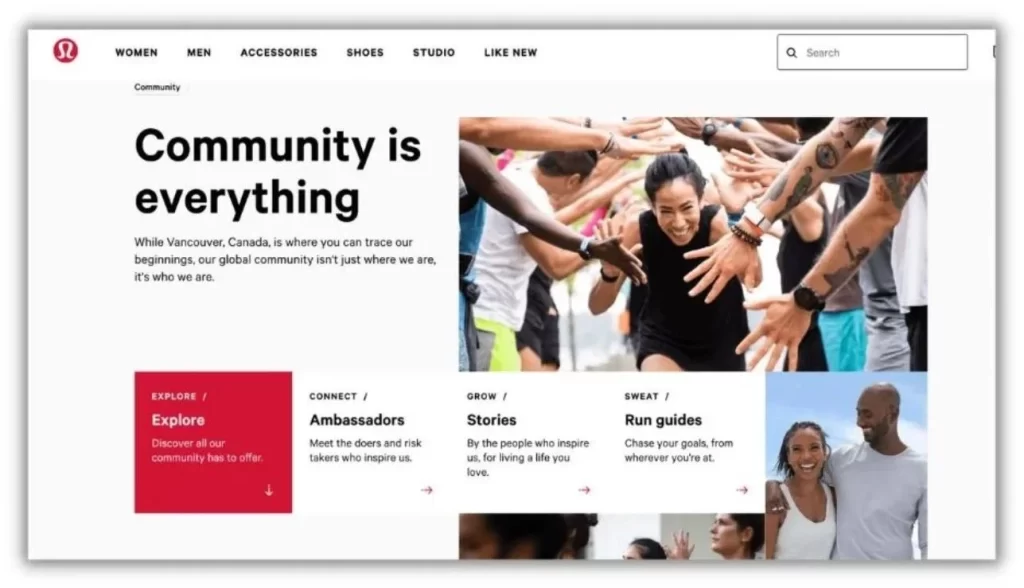
Brands that build communities on owned channels will buffer themselves against the turbulence of search and social media.
Businesses that invest in their owned channels in 2024 will be insulated, at least partly, against the whims of algorithms. They’ll also enjoy a more personal connection with their customers, which tracks with all the consumer preferences we’ve seen lately.
Topic clusters
Remember the old “hub-and-spoke” content model? That’s where you created one big, high-level asset (we’re not bringing “skyscraper” back!) that linked out to several smaller posts, each zooming in on one aspect of the topic.
Well, they’re back. And we agree with Tracy Wallace, the Director of Content at Klayvio, that it’s a great strategy not just for SEO, but for moving people through a content funnel.
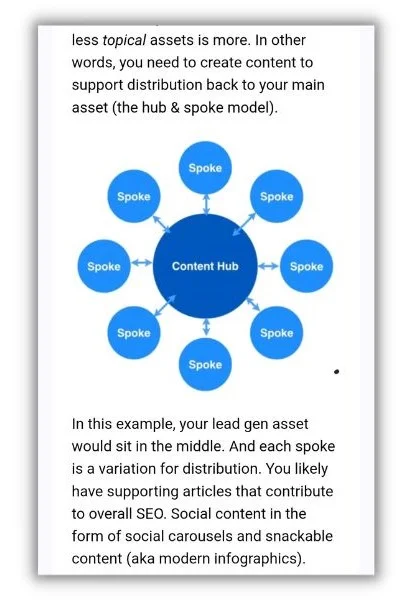
In her Contentment Newsletter, Tracy Wallace opined on the comeback of the old hub-and-spoke model.
Just make sure your hub content is super valuable and unique. Which brings us to the third retro strategy we expect to see more of in 2024…
🛑 But first: A successful topic cluster is built on great keywords. Use our Free Keyword Tool to find the phrases your customers use to learn about businesses like yours.
Original research
AI works by analyzing existing text to create something new. That’s why original research is the ultimate counter to commoditized content.
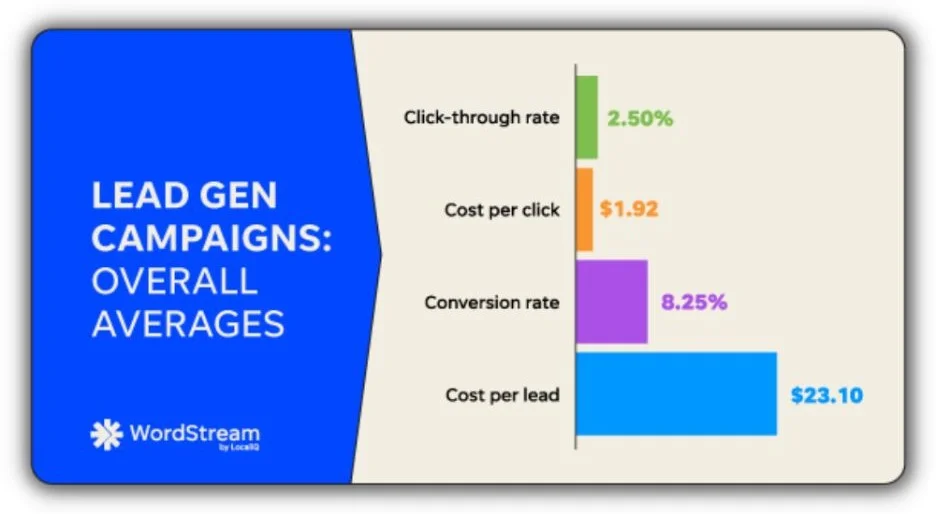
Our own WordStream Facebook ads and search ads benchmark reports are always among the highest-performing content we produce.
Original research gives your audience something they can’t get anywhere else. It’s a strong signal of authority and experience to Google. And it gets tons of backlinks and PR play.
As content gets more commoditized in 2024, we will see some of the best marketers invest more heavily in research to beat the bots.
How to prepare for this trend:
- Consider what type of original research you can conduct (surveys, internal data).
- Create a hub asset with your data and the insights you pull from it.
- Distribute pieces of that data through blog posts and on social media.
- Get creative with formats like infographics, short videos, and sharing your findings on blog posts.
Lead the content marketing trends in 2024
It’s hard to say if 2024 will be any less tumultuous than 2023 was. But it is clear that audiences are rewarding marketers who connect with them more authentically. So no matter which content marketing trends you focus on, or which strategies you use, do so with a focus on making marketing more personalized, relevant, and—even in the age of AI—human.
Need more 2024 marketing trends? We’ve got you covered:
- 7 Must-Know Digital Marketing Trends for 2024
- The 5 Biggest Google Ads Trends for 2024 (+6 Predictions)
- AI Marketing Trends for 2024 & What They Mean for You
- 12 Biggest SEO Trends to Watch in 2024
- 9 Video Marketing Trends to Watch in 2024
- The Top 2024 Social Media Marketing Trends
- 8 Important Mobile Marketing Trends to Know for 2024
- 9 Email Marketing Trends That Will Deliver Growth in 2024







